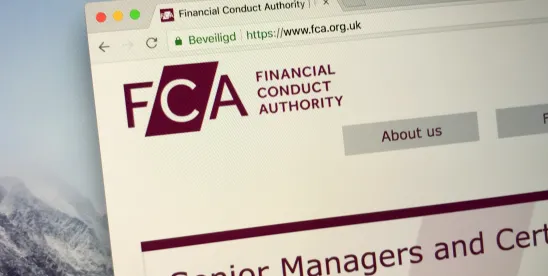On 31 May 2024, a new anti-greenwashing rule is being introduced by the Financial Conduct Authority (the “FCA”) as part of its Sustainability Disclosure Requirements (“SDR”). We cover here the introduction of the FCA’s anti-greenwashing rule and apply a legal lens on some key risk points to consider in the asset management sector.
What is greenwashing?
Greenwashing is generally considered to be where a sustainability-related statement or action does not clearly or fairly reflect the underlying sustainability profile of an entity, product or service and could be misleading to others as a result.
The fertile ground for greenwashing has arisen from the convergence of multiple evolving factors from market expectations, regulatory requirements, supervisory oversight, data quality, quantity and availability and methodological aspects of ESG. Combined, these have created an environment where greenwashing can quite readily take place – even if unintentional.
The anti-greenwashing rule and its applicability
The anti-greenwashing rule requires all FCA authorised firms to ensure that any reference to the sustainability characteristics of a product or service is consistent with the sustainability characteristics of the product or service, and is fair, clear and not misleading.
The FCA Guidance on the anti-greenwashing rule published 23 April 2024 (FG23/3), (the “FCA Guidance”) sets out that the rule applies when a firm:
- communicates with clients in the UK in relation to a product or service; or
- communicates a financial promotion (or approves a financial promotion for communication) to a person in the UK.
All sustainability references are advised in the FCA Guidance to be:
- correct and capable of being substantiated;
- clear and presented in a way that can be understood;
- complete, in that they should not omit or hide important information and should consider the full life cycle of the product or service; and
- comparisons to other products or services are fair and meaningful.
The territoriality of the rule means that it does not apply to any non-UK firms that are not authorized by the FCA, for example, an asset manager marketing a fund into the UK, and also does not apply to communications made to clients outside the UK, for example, non-UK investors.
The range of communications captured is extremely broad and includes ‘references to sustainability characteristics could be present in (but are not limited to) communications that include statements, assertions, strategies, targets, policies, information, and images relating to a product or service’.
The communications captured are not restricted to those made to retail customers but also capture a broader audience in what the FCA describes in its guidance as “business-to-business”.
Examples of good practice
The FCA has included examples of good practice in its FCA Guidance, which can be utilized in the review of controls and procedures, we reference under ‘Market commentary’ below:
- Clear Standards: Firms should set clear and robust standards for sustainability characteristics.
- Continuous Monitoring: Regularly monitor and assess the accuracy of sustainability claims.
- Transparent Marketing Materials: Ensure that marketing materials provide clear explanations of sustainability features.
Market commentary
There has been some criticism that the FCA Guidance, which is principles-based rather than prescriptive, has been published a little over a month before the introduction of the anti-greenwashing rule and that, as a result, firms have little time to prepare, and there should be a delay to its implementation.
This is somewhat counterbalanced, with other commentary having described the anti-greenwashing rule as a specific detailed bolt-on to the clear, fair and not misleading rules already applicable to FCA authorized firms. In particular, all FCA authorized firms must comply with the high level FCA Principle 7 which includes the requirement to ‘communicate information to them in a way which is clear, fair and not misleading’.
There is merit to both views, but regardless of the position on the timing of the FCA Guidance, there is a general consensus that existing controls and procedures on sustainability-related communications should be reviewed in light of the new rule, which could include:
- processes for approving sustainability-related claims or imagery, regardless of the type of document or digital location;
- development of a sustainability-related definitions bank – as there is such broad and, in some cases, interchangeable or similar terminology that can be used, establishing an in-house agreed list of definitions could mitigate any divergent approaches in use of sustainability-related terms and promote consistency; and
- enhanced training programmes and logs on sustainability-related matters across relevant personnel, such as boards, legal, compliance, risk and investment teams, beyond any sustainability teams themselves.
A legal lens
Penalties for failing to comply with the FCA’s anti-greenwashing rules can be significant and vary depending on the seriousness of the breach. The FCA regulatory enforcement action could include fines, restrictions or prohibitions, or the requirement to withdraw the communications/documents that are found to have been “greenwashed”. Where there is any regulatory enforcement action, this is likely to provide a base for litigation action. This risk may also increase if the FCA’s proposed “naming and shaming” regime comes to fruition where firms that are under FCA investigation may be named by the FCA ahead of any investigation/enforcement outcomes. In this context this could mean where there is an opening of an investigation with regards to a firm’s compliance with the anti-greenwashing rule they may be named publicly – for investors, activist litigators and their stakeholders to be aware of – even if the FCA concludes that it will not pursue any enforcement action as a result of the investigation.
With regards to litigation, generally investors or other affected parties may consider pursuing separate civil claims against the firm who have relied on the “greenwashed” communications/documents or they may potentially have a claim for damages under section 138D of the Financial Services and Markets Act 2000 where they have suffered a loss as a result of a breach of the anti-greenwashing rule.
We recommend the following three steps are considered as early action points or to be refreshed if already carried out, with regards to the litigation and regulatory enforcement risk for the asset management sector:
1. Review and monitor ESG obligations in contracts:
- We increasingly see bespoke ESG-related provisions (targets, investment restrictions or data/reporting) in fund documentation, whether in side letters, delegated investment management or advisory agreements. There is a risk that these commitments may receive less attention than more commercial, financial commitments. There is also an emerging trend for more ESG provisions to be included – or at least requested – in limited partnership agreements.
- However, given the bespoke nature of many of these provisions, the complexity of relevant national and international regulations and practical challenges (such as accurate data collection), seeking advice – both internal and external – is crucial. Lawyers and sustainability teams can help ensure proportionate language that reflects realistic deliverables, so as to minimise future litigation risks.
- Maintaining robust logs and monitoring ongoing reporting obligations between asset managers and other parties – whether third-party AIFMs, delegated investment managers, or investors – serves as a preventive measure to ensure alignment between contractual agreements and actual delivery. This helps minimize any potential gaps.
- If there is any challenge or investigation by the FCA under the anti-greenwashing rule, interested parties will naturally turn to their own contractually agreed ESG obligations to understand whether they may not be met or have not been met historically. Further, given the public focus on the issue, counterparties may see ESG-related breaches as a useful addition to a broader claim for other breaches of duty or a lever to renegotiate terms.
2. Align fund marketing disclosures:
- Whilst the Sustainable Finance Disclosure Regulation (the “SFDR”) may not be directly applicable in the UK, there are many funds that are marketed in both the UK and the EU and therefore have SFDR disclosures. Whilst the SFDR itself is in a state of development with its wholesale consultation as we covered in our update here, there has been a growing emergence of comfort by some financial market participants of the type and content of disclosures that are required. This is particularly in the case of the broad spectrum of Article 8 funds which promote environmental and/or social characteristics. On some occasions significant sections of SFDR disclosures are recycled for new investment funds, with no reference to the latest European Commission or ESMA Guidance and therefore may have disclosures that are not applicable to that investment strategy or no longer meet regulatory expectations. Ensuring there are bespoke, up-to-date disclosures drafted with the support of all relevant personnel, including legal, there can be mitigation against the risk that the SFDR disclosures – as core ESG-related marketing disclosures – may end up in the regulatory spotlight.
- Sustainability teams in asset managers have grown substantially in recent years and approaches to investment strategies with regards to ESG considerations evolve with the development of personnel, technology and understanding. Where there is a material change to the approach taken in the sustainability-related strategy of a fund, rather than leave a disconnect between the disclosures made and the approach taken, a material change notification could be considered. There is no formal guidance with regards to SFDR and material changes from the European Commission or ESMA and therefore, it can depend on specific regulator expectations, which vary by jurisdiction, but nevertheless this could be a route to align what is said and what is done.
3. Be aware of directors’ duties:
- There are a range of Companies Act 2006 claims that could be connected to greenwashing allegations and may be seized upon by claimants following any investigation from the regulator. These include:
- Promotion of the success of the company for the benefit of the members (section 172, Companies Act 2006) — this duty on company directors (which includes investor appointed directors at portfolio companies) includes the requirement to have consideration to the long-term impact of their decisions and the company’s operations on community and the environment. At asset manager level, this duty could be connected to house level consideration and commitment to climate-related strategies or targets.
- Exercise of reasonable skill, care and diligence (section 174, Companies Act 2006) – One example related to this directors’ duty and highlighting directors’ approaches is the requirement under the UK SDR for asset managers with assets under management of £5 billion or more to make disclosures in line with the Taskforce for Climate-related Financial Disclosures. This includes making public statements on the role of management in assessing and managing climate-related risks and opportunities.
- False or misleading statements (section 463, Companies Act 2006) — with the increased entity-level reporting required under SDR and broader requirements under SFDR in the EU, directors could be in the spotlight and liable to a company if there are untrue or misleading statements in (or omissions from) their company reports.
- With the increased level of entity-level statements in the public domain and required reporting under SDR, directors of asset managers are advised to be alert to the various ways in which greenwashing can occur and to ensure that management information and training is adequate to enable them to oversee sustainability related strategy. Following any regulatory scrutiny under the anti-greenwashing rule, activist litigators may seize on any doubts raised to pursue director duty claims. Regardless of the legal hurdles to achieve a successful claim, they may consider this route for reputational impact to the asset manager alone and the regulatory investigation to be the ideal basis from which to launch their claim.
This is a legal snapshot of the matrix of sustainability-related requirements and factors that asset managers are required to navigate and how they are connected to the anti-greenwashing rule.







 />i
/>i
